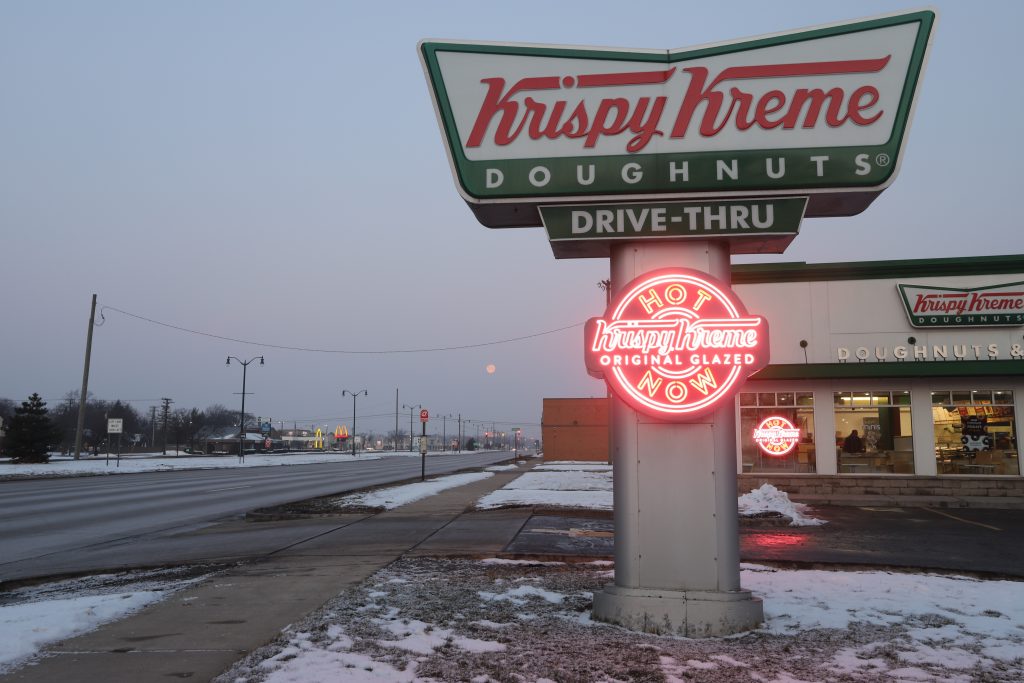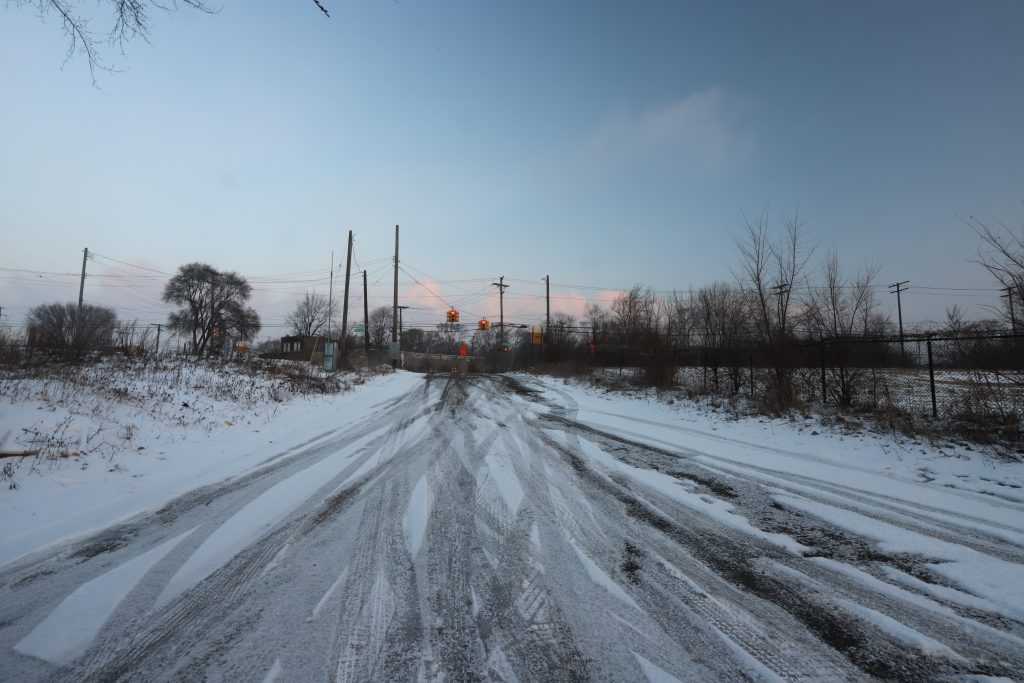Travels and Travails in the Downriver Smog
Detroit’s largely working-class southern suburbs include the likes of neighbors Allen Park and Lincoln Park. The latter, a working class city of midcentury storefronts and single-family housing, is the second most densely populated city in the state of Michigan (after Hamtramck). While there are different “downrivers” as far as the demographic makeup and wealth– Taylor, for example, being substantially wealthier than the low-income City of River Rouge- the geography unequivocally begins at the Rouge River, which forms part of the extreme southwestern boundary of the Detroit city limits, and stretches to some indeterminate southern point. Downriver is largely defined by wide arterials like Telegraph Rd., Jefferson Avenue, Fort St., and Southfield Road. The dreadful air pollution of Southwest Detroit, which ranks among some of the worst in the nation, is also clustered around the Rouge River.

As I’m not usually up at 7am on a Sunday, I had the rare opportunity to enjoy some Krispy Kreme doughnuts while witnessing both celestial bodies in their respective ascents and descents. I decided to return via Jefferson.

Today’s poor air quality index of 87, mostly from high PM2.5 emissions, is also apparent in the smog. The silver lining– or hazy grey, really- of the plant closure may be in some air quality improvements.
CONSIDERING SCALES OF ACCOUNTABILITY
Southwest Detroit has long been a battleground for environmental justice issues. Our own Rashida Tlaib, herself formerly a resident of the neighborhood, continues to call out the issues and is currently fighting for regulation of PFAS. Marathon Oil takes the brunt of the criticism, probably because it makes the air smell bad even if it doesn’t generate all of the pollution. And, well, sometimes stuff blows up there.
But let’s take a moment to point out that US Steel’s environmental record is fairly abominable. According to summarized data Good Jobs First, which tracks ESG metrics and economic development funding, US Steel topped a list of competitors in terms of its number of violations. I assembled these in a small chart, looking at horizontal industry comparisons as well as the specific local cluster. US Steel did not top the list in terms of violation costs ($33m versus Nucor’s $129m) because it is a much smaller company.

THE STATS
I controlled for size of the company by indexing violations against total revenue for the most recent year (MRY). Without outliers, the violations are fairly normally distributed. More than a third of AK Steel’s total penalties, for example, came from a massive settlement over a pension dispute. The same is true with Nucor, which overall would appear to be a comparatively far more responsible company.
AK has far more violations, even subtracting the nine-figure pension settlement. It’s hard to judge Arcelor Mittal because they operate mostly internationally. Controlling for company size (normalized violation dollar amounts divided by MRY revenue), US Steel is settling nearly 80% more per year in violation costs than Nucor.
Nucor, similarly, has a very low number of total violations. 78% of its penalties in dollar amounts, though, came from a single “multimedia” settlement from a sort of umbrella lawsuit that addressed a laundry list of violations. Even with this big settlement, Nucor would seem to be the champ among these. The Charlotte, North Carolina producer, which took US Steel by storm by focusing on production through more modern, efficient, and small electric arc furnaces instead of the massive and resource-intensive blast furnaces favored by US Steel, only counts 3.06 violations per billion dollars in revenue. Compare this to US Steel’s whopping 348.70 violations per billion dollars in revenue.
In other news, these guys are pretty bad news.

LOOKING FORWARD
It’s unclear exactly what will happen to US Steel’s mill or the DTE coke plant that supplies it. I’d love to see some attempt at reclaiming our industrial heritage for future enjoyment. I toured plenty of these sites in Germany, where the dominant approach is to repurpose rather than simply demolish. In addition to its landscape of smoke and smog, the Detroit River offers some pristine scenery. This may yet be something to be investigated. Of course, this requires US Steel to respond to a single media inquiry, something they have never done for me.
But, as with my trip to a suburban Krispy Kreme shop at 7:30 on a Sunday morning, there is a first time for everything.
(A separate story will investigate the future of Zug Island following the closure of the mill.)

